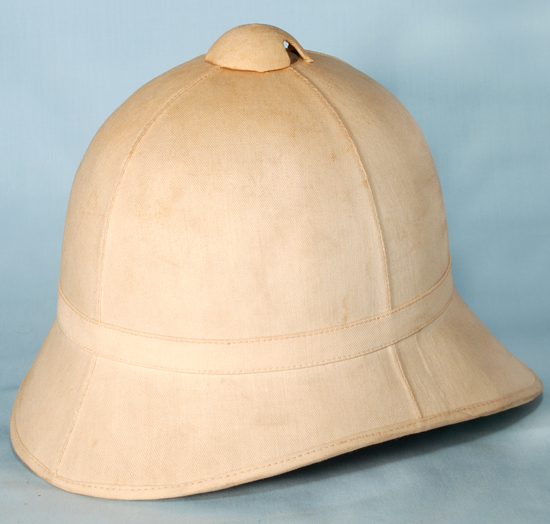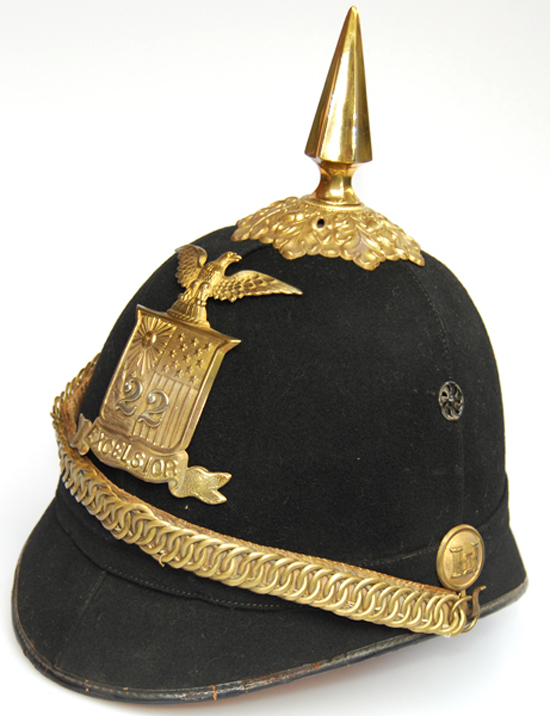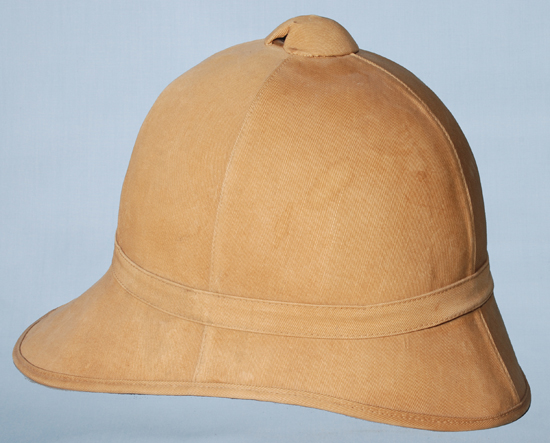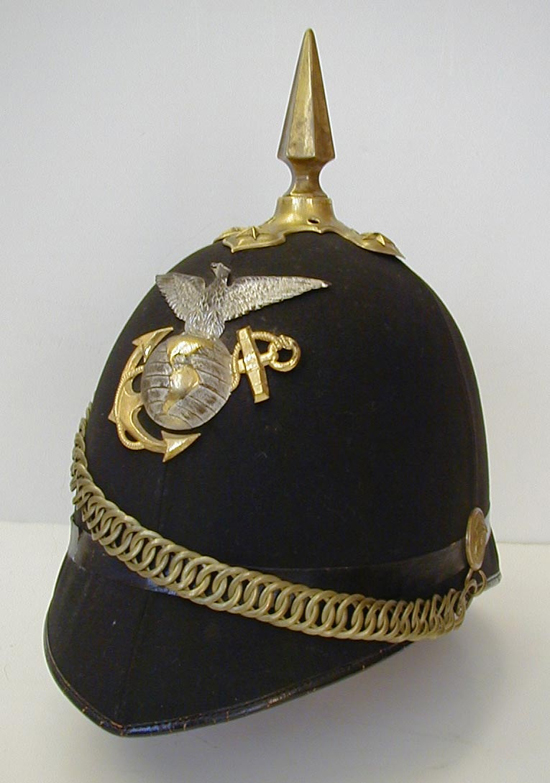
The “Classic” American Sun Helmet of the late 19th Century. This Model 1887 helmet features four panel construction and is constructed of cork covered with bleached cotton drill.
While the various European powers sought a “place in the sun” and established colonies around the world, the United States in the latter half of the 19th century expanded westward and tamed the interior of the North American continent.
As an emerging power during this time – even as the actual size of the American military remained small – military planners looked to European influences. While American uniforms during the Civil War were certainly influenced by those of France, following the Franco-Prussian War this shifted towards a Prussian influence.
Various American military units adopted leather spike helmets clearly based on the German “Pickelhaube” while the “Horsehair Plume” helmets of the era bare a close resemblance to the British Home Service Helmet. This headdress was a part of the dress uniform but was entirely inappropriate for the role the United States Army played in the Indian Wars on the frontier.

National Guard as well as Army and Marine units wore the dark blue/black dress helmets. This example features a helmet plate for the 22nd New York National Guard Infantry.
During the summer months a number of other options were considered, and this included straw hats but the Americans looked to the British style summer helmet. In the early 1870s, even before the British adopted its own Foreign Service Helmet, the United States Quartermaster at the time, Montgomery C. Meigs contacted the British government to obtain cloth-covered helmets.
While some examples may have been provided it was actually American firms that produced the helmets. However, a misconception remains – even following the publishing of this author’s book Military Sun Helmets of the World that Great Britain produced and/or supplied the American helmets.
The first pattern was introduced approved in 1880 yet few examples of this early version remain. The more commonly encountered versions are the M1887 cork helmet, which typically produced with bleached cotton drilling, and the later M1889 cork helmet, which was covered in a tan cloth.

An American Model 1889 sun helmet with tan drill cloth covering. This style of helmet was used in the Spanish-American War, during the Philippine Insurrection and with American military units serving in China.
These helmets were reportedly hated by the soldiers, but were used throughout the final decades of the 19th century and saw service in the Spanish-American War. While the summer cork helmets were never intended to be used with insignia or trimmings photographic evidence, along with surviving examples, suggest that this regulation was ignored.
However, it does seem that the use of spikes, chinchains, side buttons and other accoutrements meant for the dark blue/black dress helmet were typically used with the white/bleached helmets and not the tan/khaki examples – this suggests that regulations in the book may have said one thing while the practice was another entirely.

An example of the M1887 helmet, which seems to have been “painted” with Blanco to give it a fresh white look. This helmet features the brass hardware, including spike and base, chinchain, helmet plate and side buttons that were worn with the dark blue/black dress helmet. While against official regulations it seemed it was common for officers to wear the accoutrements on these helmets.
By the outbreak of the First World War the summer sun helmets were largely removed from service and it was ironically in distant China where the helmets were last used by the United States Army around 1912. It would be another 25 years before the United States military would consider another sun helmet – that being the pressed fiber helmet.
Peter Suciu


I have what appears to be the American patent Sun helmet, however it has a paper label inside saying patented 2 may 1899. Any idea what this helmet is?